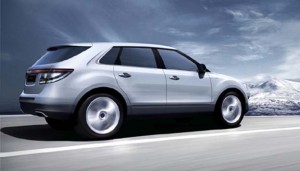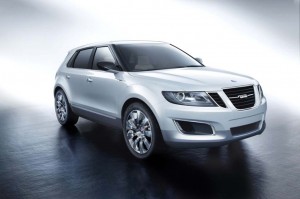This time last year, things were looking increasingly bleak, almost by the day, for Sweden’s Saab. Its owner, General Motors, was planning to either sell the small brand off or shut it down, and as the New Year approached, the latter option looked more and more likely.
Indeed, the assembly line at Trollhattan did come to a halt for about six weeks before Saab’s unexpected white knight, the small Dutch sports carmaker, Spyker, came to the rescue. Today, production of the Saab 9-5 flagship is pretty much back on track. And the next step in the Swedish company’s nascent recovery is being revealed at the 2010 Los Angeles Motor Show.
Though Saab briefly tried to find a niche with the old and largely-unloved 9-7X, industry observers believe it’s got a much better chance of hitting a home run – or at least a solid double – with the new 9-4X, the maker’s first crossover-utility vehicle.

Though the 9-4X shares platforms with the Cadillac SRX, the new Swedish offering has plenty of Saab's visual DNA.
The CUV’s design is far more Saab-like than the 9-7X, with the traditionally rounded front end and angular grille. But a closer look might bring to mind one of GM’s new offerings, as well, and no surprise, as the 9-4X shares the same underpinnings as the second-generation Cadillac SRX and is produced alongside the Caddy, at a GM plant in Mexico.
But the overall look and feel is far more true to Saab’s roots, down to the green-on-black gauges in the five-passenger interior. There’s even a starter button located where you’d expect it in a Saab, between the front seats.
Initially, Saab will roll the 9-4X out with a single 3.0-liter gasoline engine, mated to a six-speed gearbox. But it will subsequently offer a smaller 2.8-liter six, as well as a diesel, for European and other global markets.
With the 9-4X and upcoming remake of the base 9-3 model, Saab will have a completely new line-up with which its new owners hope to take the company back into the black by 2012. They’re also pushing to add a downsized 9-2 by mid-decade, though the carmaker has yet to line up the financing it needs for that project.
The 9-2 will almost certainly require an alliance with another automaker, a strategy new Chairman Victor Muller – who also owns Spyker – tends to favor over a go-it-alone approach. Muller has already inked a deal with BMW to provide engines for future models, those powertrains eventually planned to replace the current engines sourced from former parent General Motors.

